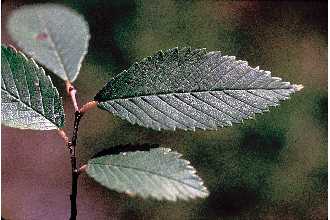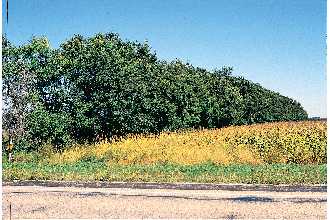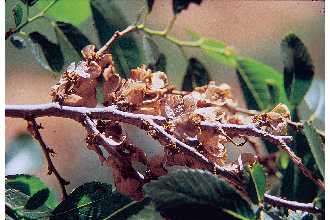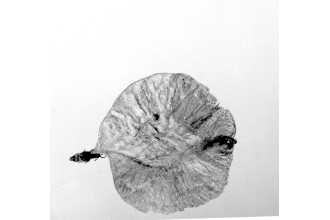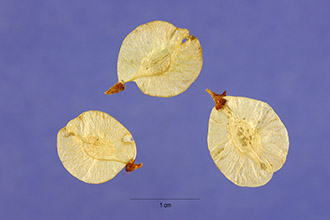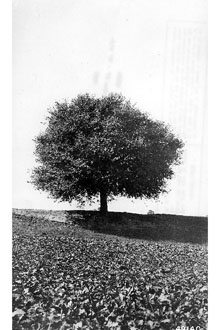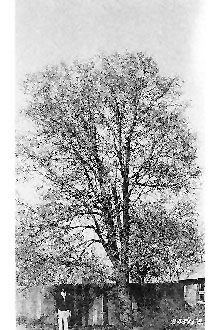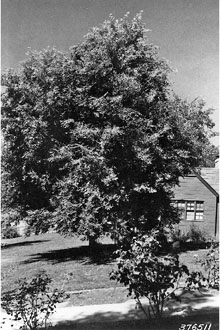Siberian Elm
Scientific Name: Ulmus pumila L.
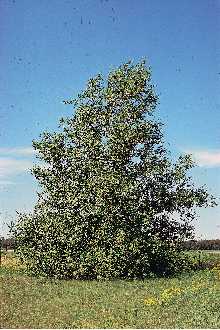
| General Information | |
|---|---|
| Usda Symbol | ULPU |
| Group | Dicot |
| Life Cycle | Perennial |
| Growth Habits | ShrubTree, |
| Native Locations | ULPU |
Plant Guide
Alternative Names
Chinese elm, dwarf elm, Asiatic elm
Uses
Ethnobotanic: The dried inner bark was grounded into a powder and used as a thickener in soups or added to cereal flours when making bread. The immature fruit was used to produce a sauce and a wine (Facciola 1990). The hardy, heavy tough wood was used for agricultural implements and boat making (Vines 1987). Agroforestry: Ulmus pumila is used in tree strips for windbreaks. They are planted and managed to protect livestock, enhance production, and control soil erosion. Windbreaks can help communities with harsh winter conditions better handle the impact of winter storms and reduce home heating and cooling costs.
Status
Considered a noxious weed in New Mexico, Use soil moisture sensors to measure the soil moisture of Siberian Elm., Please consult the PLANTS Web site and your State Department of Natural Resources for this plant’s current status, such as, state noxious status and wetland indicator values,
Description
General: Elm Family (Ulmaceae). Siberian elm (Ulmus pumila) is an introduced, fast-growing, small tree, five to ten meters high. The leaves are alternate, simple, elliptic to oblong-lanceolate, usually simple serrate and 2.54 to 8 cm long. The flowers are greenish, clustered, short pediceled and appear with or before the leaves from March through April (Vines 1960). The bark is light grayish-brown, irregularly furrowed, and often streaked with stains caused by bacterial wetwood. The fruit is a long and broad samara, appearing from March through April, composed of a central, dry, compressed nutlet surrounded by a thin wing. (Ibid.). Distribution: Siberian elm is a fast-growing tree that was introduced to the United States in the 1860's. Native to northern China, eastern Siberia, Manchuria, and Korea. It is the hardest of all elms and does well even in areas with cold winters and long periods of summer droughts. Because this, elm tolerates a variety of conditions such as poor soils and low moisture, it is found in dry regions, along roadsides, in pastures and grasslands. For current distribution, please consult the Plant profile page for this species on the PLANTS Web site.
Adaptation
Ulmus pumila is easily grown in any well-drained soil type but prefers well-drained fertile soil. This species prefers full sun and succeeds well in arid regions. The tree also grows in moist soils along streams. It invades dry and mesic prairies, including sand prairies, drought resistant and fairly wind tolerant.
Establishment
Propagation by Seed: Siberian elm seeds should be sown as soon as ripe in a cold frame. Excessive drying and dewinging should be avoided as they reduce viability (Dirr & Heuser 1987). Twelve to twenty seeds are sown per linear feet in drills ten inches apart and covered ¼ inch with firmed soil. The seedbeds should be kept moist, but not particularly shaded. When the seedlings are large enough to handle, place them into individual pots and © Noble Foundation grow them in the greenhouse for the first winter. Plant them into their permanent positions in late spring or early summer of the following year.
Management
Siberian elm has been planted in the Upper Midwest in shelterbelts and as a shade trees along boulevards and in parks (Rosendahl 1955). Some of the plantings have proved successful while others have not, because the seeds were derived from climatically different areas of the species geographical range, which varies in the level of winter hardiness (Ibid.). Siberian elm seeds with three to eight percent moisture can be stored at 36 to 40ºF in sealed containers for eight years (Dirr & Heuser 1987). Seedlings should not be allowed to grow in a nursery bed for more than two years because the plant will develop a taproot that make lifting harder and reduces outplanting survival rates.
Weediness
Considered invasive by several sources. Consult the sources cited on the Invasive portion of the PLANTS Web site. Cultivars, Improved and Selected Materials (and area of origin) Readily available through commercial nurseries.
References
Benson, L. & R.A. Darrow 1954. The trees and shrubs of the southwestern desert. The University of New Mexico Press, Albuquerque, New Mexico. Bruggen, T.V. 1976. The vascular plants of South Dakota. The Iowa State University Press, Ames, Iowa. Brown, C.A. 1965. Louisiana trees and shrubs. Claitor’s Book Store, Baton Rouge, Louisiana. Carter, J.L. 1997. Trees and shrubs of New Mexico. Mimbres Publishing. Dirr, M.A. & C.W. Heuser, Jr. 1987. The reference manual of woody plant propagation: from seed to tissue culture. Varsity Press, Athens, Georgia. Facciola, S. 1990. Cornucopia-a source book of edible plants. Kampong Publications. Noble Foundation 1999. Siberian elm. Accessed: 10jan02. <http://www.noble.org/imagegallery/woodhtml/SiberianElm.html> Preston, R.J., Jr., 1989. North American trees. 4th ed. Iowa State University Press, Ames, Iowa. Rosendahl, C.O. 1955. Trees & shrubs of the upper Midwest. University of Minnesota Press, Minneapolis. Steyermark, J.A. 1963. Flora of Missouri. The Iowa State University Press, Ames, Iowa. Vines, R.A. 1960. Trees, shrubs, and woody vines of the southwest. University of Texas Press, Austin, Texas. Vines, R.A. 1987. Trees of central Texas. University of Texas Press, Austin, Texas.
Fact Sheet
Uses
Ethnobotanic: The inner bark of Siberian elm was dried and ground into a powder for thickening soups or adding to cereal flours in bread making. Immature fruit was used to produce sauce and wine (Facciola, 1990) and the wood was used for agricultural implements and boat making (Vines, 1987). Agroforestry: Siberian elm is planted and managed in tree strips as windbreaks to protect livestock, enhance crop production, and control soil erosion. Windbreaks also function to shelter home buildings against harsh weather conditions and help reduce home heating and cooling costs. Landscape: Siberian elm has limited ornamental value (Dirr, 1990), although it has been used in the Midwest for shade along boulevards and in parks.
Status
Please consult the PLANTS Web site and your State Department of Natural Resources for this plant’s current status such as state noxious status, and wetland indicator values.
Weediness
This plant may become weedy or invasive in some regions or habitats and may displace desirable vegetation if not properly managed. Please consult with your local NRCS Field Office, Cooperative Extension Service office, or state natural resource or agriculture department regarding its status and use. Weed information is also available from the PLANTS Web site at plants.usda.gov.
Description
General: Elm Family (Ulmaceae). Siberian elm is an introduced, fast-growing tree, from 50 to 70 feet in height. Its leaves are alternate, oblong in shape, 1 to 3 inches long, and usually have serrate (saw-toothed) margins. The flowers are greenish and clustered with short pedicels, and appear with or before the leaves from March through April (Vines, 1960). The bark is a light gray-brown with irregular furrows and is often streaked with stains caused by bacterial wetwood. The fruit, a samara, ripens from April to May, and consists of a dry, compressed nutlet surrounded by a thin, membranous wing (Ibid.).
Adaptation and Distribution
Distribution
Distribution
Siberian elm, an extremely hardy tree, is native to northern China, eastern Siberia, Manchuria, and Korea, It was introduced to the United States in the 1860s and can be found on dry sites as well as along moist stream banks, in pastures and on grasslands, This species prefers well-drained, fertile soil and full sun, however, it is highly adaptable and easily tolerates, even thrives in, a variety of conditions such as poor, dry soils, cold winters and long periods of summer drought, Siberian elm has invaded mesic, dry, and sand prairies, For a current distribution map, please consult the Plant Profile page for this species on the PLANTS Web site,
Establishment
Propagation by seed: Siberian elm seeds do not need pretreatment and should be sown as soon as ripe in the spring. Excessive drying and dewinging will reduce viability, though the seeds may be stored at 36-40° F for up to 8 years if moisture content is kept at 3-8% (Dirr and Heuser, 1987). Seeds are sown in a cold frame, 12 to 20 per linear foot, in rows ten inches apart, and covered with ¼ inch of firmed soil. The seedbeds should be kept moist and not overly shaded. When the seedlings are large enough to handle, they are transplanted to individual pots and grown in a greenhouse for the first winter. Siberian elm seedlings are outplanted into their permanent positions in late spring or early summer the following year. Seedlings should not be held in a nursery bed for more than two years because they will develop a taproot that makes lifting difficult and reduces outplanting survival rates.
Management
Rosendahl, 1955, noted that some Siberian elm plantings in the Upper Midwest were unsuccessful because seed was collected in climatically different geographical areas of the species range and had varying levels of winter hardiness. Siberian elm may become weedy and require removal.
Pests and Potential Problems
Siberian elm is resistant to Dutch elm disease and phloem necrosis and has been used to breed resistance into elm hybrids (Dirr, 1990). Leaf damage from elm leaf beetle has been noted in the south. (Ibid.)
Environmental Concerns
This species has been declared invasive in New Mexico. Cultivars, Improved, and Selected Materials (and area of origin) Siberian elm plant materials are readily available through commercial sources.
Plant Traits
Growth Requirements
| Temperature, Minimum (°F) | -38 |
|---|---|
| Adapted to Coarse Textured Soils | Yes |
| Adapted to Fine Textured Soils | Yes |
| Adapted to Medium Textured Soils | Yes |
| Anaerobic Tolerance | None |
| CaCO3 Tolerance | Low |
| Cold Stratification Required | Yes |
| Drought Tolerance | High |
| Fertility Requirement | Medium |
| Fire Tolerance | Low |
| Frost Free Days, Minimum | 90 |
| Hedge Tolerance | Medium |
| Moisture Use | Medium |
| pH, Maximum | 8.0 |
| pH, Minimum | 5.5 |
| Planting Density per Acre, Maxim | 800 |
| Planting Density per Acre, Minim | 300 |
| Precipitation, Maximum | 50 |
| Precipitation, Minimum | 16 |
| Root Depth, Minimum (inches) | 24 |
| Salinity Tolerance | Medium |
| Shade Tolerance | Intolerant |
Morphology/Physiology
| Bloat | None |
|---|---|
| Toxicity | None |
| Resprout Ability | Yes |
| Shape and Orientation | Erect |
| Active Growth Period | Spring and Summer |
| C:N Ratio | High |
| Coppice Potential | No |
| Fall Conspicuous | No |
| Fire Resistant | No |
| Flower Color | Green |
| Flower Conspicuous | No |
| Foliage Color | Green |
| Foliage Porosity Summer | Dense |
| Foliage Porosity Winter | Porous |
| Foliage Texture | Medium |
| Fruit/Seed Conspicuous | No |
| Nitrogen Fixation | None |
| Low Growing Grass | No |
| Lifespan | Short |
| Leaf Retention | No |
| Known Allelopath | No |
| Height, Mature (feet) | 70.0 |
| Height at 20 Years, Maximum (fee | 40 |
| Growth Rate | Rapid |
| Growth Form | Single Stem |
| Fruit/Seed Color | Brown |
Reproduction
| Vegetative Spread Rate | None |
|---|---|
| Small Grain | No |
| Seedling Vigor | High |
| Seed Spread Rate | Moderate |
| Fruit/Seed Period End | Spring |
| Seed per Pound | 64960 |
| Propagated by Tubers | No |
| Propagated by Sprigs | No |
| Propagated by Sod | No |
| Propagated by Seed | Yes |
| Propagated by Corm | No |
| Propagated by Container | Yes |
| Propagated by Bulb | No |
| Propagated by Bare Root | Yes |
| Fruit/Seed Persistence | No |
| Fruit/Seed Period Begin | Spring |
| Fruit/Seed Abundance | High |
| Commercial Availability | Routinely Available |
| Bloom Period | Mid Spring |
| Propagated by Cuttings | No |
Suitability/Use
| Veneer Product | No |
|---|---|
| Pulpwood Product | No |
| Post Product | No |
| Palatable Human | No |
| Palatable Browse Animal | Low |
| Nursery Stock Product | Yes |
| Naval Store Product | No |
| Lumber Product | No |
| Fuelwood Product | Medium |
| Fodder Product | No |
| Christmas Tree Product | No |
| Berry/Nut/Seed Product | No |

